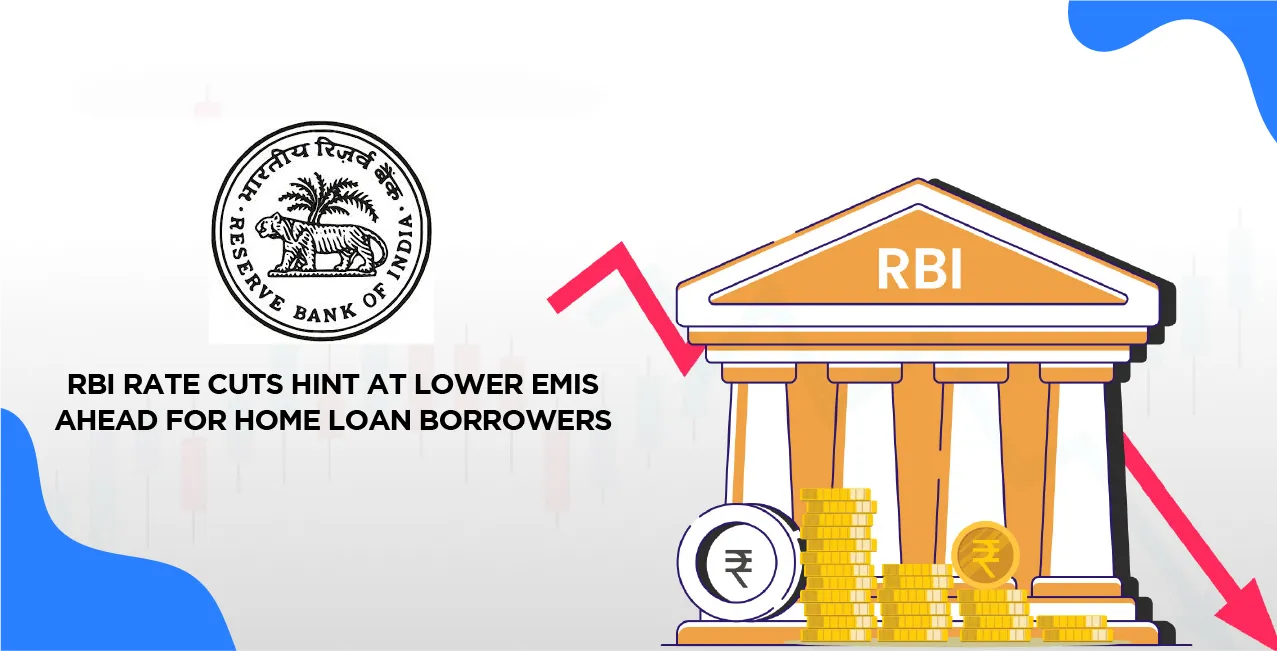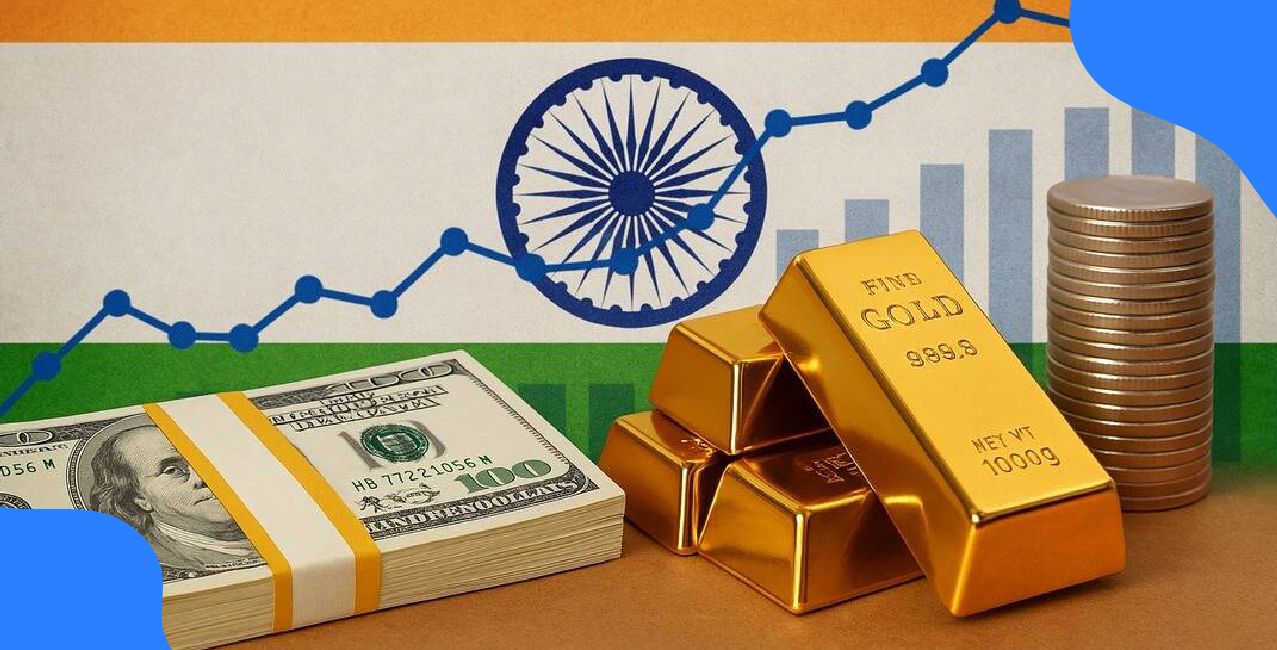
Author
LoansJagat Team
Read Time
4 Min
04 Jun 2025
RBI Rate Cuts Hint at Lower EMIs Ahead For Home Loan Borrowers
Gaurav found a lovely home with a garden and a blue door. It cost ₹40,00,000, which is too much for his savings. So, he went to the bank and asked for a loan. The bank agreed, but he had to pay EMI monthly.
Gaurav borrowed ₹30,00,000 (he paid the remaining ₹10,00,000 from his savings).
The loan is for 20 years at an annual interest rate of 8%.
Year | Loan Amount Left (Approx.) | Monthly EMI (₹) | Total Paid in That Year (₹) |
1 | ₹30,00,000 | ₹25,093 | ₹3,01,116 |
2 | ₹29,33,713 | ₹25,093 | ₹3,01,116 |
3 | ₹28,61,233 | ₹25,093 | ₹3,01,116 |
… | — | ₹25,093 | ₹3,01,116 |
20 | ₹0 | ₹25,093 | ₹3,01,116 |
One day, after making his 40th EMI payment, Gaurav was reading the news and saw something that made his eyes go wide!
“Wait… what?! There’s a new rule about EMIs?”
It could change everything about how he pays for his loan. Let’s find out what he found in this news.
What Did Gaurav Discover? A Sweet Surprise on His EMI
So remember, Gaurav was paying his EMI every month for his home loan. Then one day, something interesting happened.
The Reserve Bank of India, or RBI, decided to cut the repo rate. That’s a special rate that affects how much interest banks charge when they give out loans. When the repo rate goes down, home loans can become cheaper.
Read More – RBI Rate Cuts Hint at Lower EMIs Ahead For Home Loan Borrowers
Because of this, Gaurav’s bank gave him a choice:
- Option 1: Keep paying the same EMI, but finish the loan earlier (reduce the time).
- Option 2: Pay a smaller EMI every month, but keep the loan for the same number of years.
Gaurav chose Option 2 because he liked the idea of saving some money each month.
How Much Did Gaurav Save?
Before the change:
- Old EMI: ₹25,093 per month
After the repo rate cut:
- New EMI: ₹23,838 per month
So, Gaurav started saving ₹1,255 every month. And if the interest rate stays the same for the full 20 years, Gaurav will save around ₹3,01,000 in total interest. That’s a big saving just by choosing the right option.
Gaurav felt proud.
He said, “I didn’t know I could save so much just by changing how I pay my loan.”
Why Did Gaurav’s EMI Go Down? Here’s What Happened
Gaurav was curious to know why his EMI amount was lower now. So he did a little research and found out something important.
The Reserve Bank of India (RBI), like the big boss of all banks in the country, has decided to help people who take loans. In February and April, the RBI had meetings and decided to cut the repo rate.
The repo rate is the rate at which the RBI lends money to banks. When this rate goes down, banks get money at a cheaper rate. When banks pay less, they can also charge less interest to people like Gaurav, who take home loans.
Earlier, the repo rate was 6.50%.
Now, after two cuts of 25 basis points each (0.25% + 0.25%), it has come down to 6.00%.
Because of this reduction, banks had to pass on the benefit to their customers slowly. That’s how Gaurav’s EMI was reduced without him doing anything.
The Part About Home Loans You Didn’t Hear Before
The Reserve Bank of India has made two cuts to the repo rate this year. But why didthe RBI do this, and will the rates be much lower than the current ones in the future? Let’s understand this.
Because the weather was good and crops grew well this year (called a good kharif crop), and prices didn’t go up much (called low inflation), experts think the RBI will keep lowering the repo rate.
Also Read - This Hack Can Save You ₹50,000+ on Your Loan Repayment
What does this mean for you? If you want to buy a house or an apartment, this might be a good time to take a loan because interest rates on home loans could get even lower.
So, here are some of the best home loan rates from different banks you can think about.
Name of Lender | Loan Amount (₹) | ||
Upto ₹30,00,000 | Above ₹30,00,000 and upto ₹75,00,000 | Above ₹75,00,000 | |
Public Sector Banks | - | - | - |
State Bank of India | 8.00-9.65 | 8.00-9.65 | 8.00-9.00 |
Bank of Baroda | 8.00-9.20 | 8.00-9.20 | 8.00-9.20 |
Union Bank of India | 7.85-10.25 | 7.85-10.40 | 7.85-10.40 |
Punjab National Bank | 8.05-9.85 | 8.05-9.75 | 8.00-9.75 |
Bank of India | 8.00-10.35 | 8.00-10.35 | 8.00-10.65 |
Karur Vysya Bank | 8.45-11.40 | 8.45-11.40 | 8.45-11.40 |
Karnataka Bank | 8.78-11.02 | 8.78-11.02 | 8.78-9.43 |
Federal Bank | 8.55 onwards | 8.55 onwards | 8.55 onwards |
Tamilnad Mercantile Bank | 8.50-9.75 | 8.50-9.75 | 8.50-9.75 |
Bandhan Bank | 8.66-15.00 | 8.66-12.83 | 8.66-12.83 |
RBL Bank | 9.00 onwards | 9.00 onwards | 9.00 onwards |
CSB Bank | 10.11-11.84 | 10.11-11.84 | 10.11-11.84 |
Conclusion
So, what does all this mean?
When the Reserve Bank of India cuts the repo rate, banks can offer home loans at cheaper interest rates. And when interest rates drop, EMIs (the money you pay monthly for your home loan) also become smaller.
That’s good news for those who have already taken a home loan and for those who plan to take one soon.
If more rate cuts happen, home loan EMIs might get even lower. So, people could save more money every month without doing anything extra.
It’s a great gift from the RBI, and it’s worth keeping an eye on.
About the Author

LoansJagat Team
‘Simplify Finance for Everyone.’ This is the common goal of our team, as we try to explain any topic with relatable examples. From personal to business finance, managing EMIs to becoming debt-free, we do extensive research on each and every parameter, so you don’t have to. Scroll up and have a look at what 15+ years of experience in the BFSI sector looks like.

Quick Apply Loan
Subscribe Now
Related Blog Post

LoansJagat Team • 11 Dec 2025

LoansJagat Team • 11 Dec 2025

LoansJagat Team • 12 Dec 2025